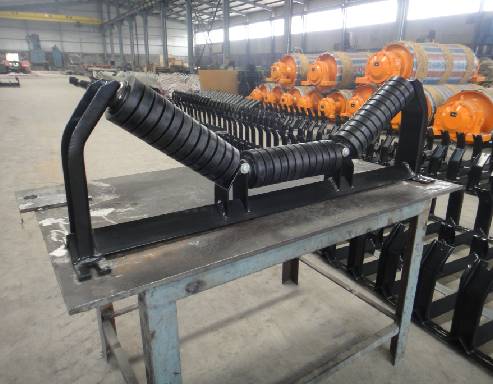 Afrikaans
Afrikaans  Albanian
Albanian  Amharic
Amharic  Arabic
Arabic  Armenian
Armenian  Azerbaijani
Azerbaijani  Basque
Basque  Belarusian
Belarusian  Bengali
Bengali  Bosnian
Bosnian  Bulgarian
Bulgarian  Catalan
Catalan  Cebuano
Cebuano  Corsican
Corsican  Croatian
Croatian  Czech
Czech  Danish
Danish  Dutch
Dutch  English
English  Esperanto
Esperanto  Estonian
Estonian  Finnish
Finnish  French
French  Frisian
Frisian  Galician
Galician  Georgian
Georgian  German
German  Greek
Greek  Gujarati
Gujarati  Haitian Creole
Haitian Creole  hausa
hausa  hawaiian
hawaiian  Hebrew
Hebrew  Hindi
Hindi  Miao
Miao  Hungarian
Hungarian  Icelandic
Icelandic  igbo
igbo  Indonesian
Indonesian  irish
irish  Italian
Italian  Japanese
Japanese  Javanese
Javanese  Kannada
Kannada  kazakh
kazakh  Khmer
Khmer  Rwandese
Rwandese  Korean
Korean  Kurdish
Kurdish  Kyrgyz
Kyrgyz  Lao
Lao  Latin
Latin  Latvian
Latvian  Lithuanian
Lithuanian  Luxembourgish
Luxembourgish  Macedonian
Macedonian  Malgashi
Malgashi  Malay
Malay  Malayalam
Malayalam  Maltese
Maltese  Maori
Maori  Marathi
Marathi  Mongolian
Mongolian  Myanmar
Myanmar  Nepali
Nepali  Norwegian
Norwegian  Norwegian
Norwegian  Occitan
Occitan  Pashto
Pashto  Persian
Persian  Polish
Polish  Portuguese
Portuguese  Punjabi
Punjabi  Romanian
Romanian  Russian
Russian  Samoan
Samoan  Scottish Gaelic
Scottish Gaelic  Serbian
Serbian  Sesotho
Sesotho  Shona
Shona  Sindhi
Sindhi  Sinhala
Sinhala  Slovak
Slovak  Slovenian
Slovenian  Somali
Somali  Spanish
Spanish  Sundanese
Sundanese  Swahili
Swahili  Swedish
Swedish  Tagalog
Tagalog  Tajik
Tajik  Tamil
Tamil  Tatar
Tatar  Telugu
Telugu  Thai
Thai  Turkish
Turkish  Turkmen
Turkmen  Ukrainian
Ukrainian  Urdu
Urdu  Uighur
Uighur  Uzbek
Uzbek  Vietnamese
Vietnamese  Welsh
Welsh  Bantu
Bantu  Yiddish
Yiddish  Yoruba
Yoruba  Zulu
Zulu Understanding Roller Lagging Techniques for Enhanced Performance in Conveyor Systems
Understanding Roller Lagging Enhancing Conveyor Performance
Roller lagging is a crucial aspect of conveyor system design and operation that significantly influences the efficiency and productivity of material handling processes. This technique involves applying a layer of material, usually rubber or other resilient substances, to the surface of conveyor rollers. The purpose of roller lagging is to enhance the performance of conveyor systems in diverse industrial applications, including mining, food processing, and logistics.
One of the primary advantages of roller lagging is its ability to increase the friction between the roller and the conveyor belt. This added friction is essential for preventing slippage, which can lead to material spillage and inefficient operation. In industries where the movement of heavy materials is routine, such as in mining and aggregate handling, slippage can cause significant disruptions. Roller lagging mitigates this issue, ensuring a smooth and reliable transfer of materials from one point to another.
Additionally, roller lagging can contribute to the longevity of the conveyor system
. Rubbery surfaces are more resilient and can absorb impacts better than bare metal rollers. This property reduces wear and tear on both the roller and the conveyor belt, resulting in lower maintenance costs and extended lifespan for both components. The investment in roller lagging technology becomes cost-effective in the long run, as it minimizes frequent replacements and repairs.Another benefit of using roller lagging is its capability to improve overall system performance. Lagged rollers can enhance the belt's tracking and alignment, which is critical for optimal operation. When a belt tracks correctly, it reduces the chances of wear on the belt edges, ensuring that it operates efficiently for an extended period. Moreover, by improving the alignment of the belt, roller lagging can prevent misalignment, which is a common issue in conveyor operations that can lead to belt derailment and unscheduled downtime.
roller lagging

Roller lagging also plays a substantial role in noise reduction within the workplace. The rubberized surfaces tend to dampen vibrations and noise produced during the roller's operation, resulting in a quieter work environment. This can greatly benefit workplaces where excessive noise is a concern, improving the overall health and safety standards for employees.
Furthermore, roller lagging materials can be tailored to suit specific operational requirements. For example, certain types of lagging can be designed to enhance grip on frozen or wet materials, which is particularly advantageous in environments where moisture or icy conditions are prevalent. Industries dealing with agricultural products or food processing often benefit from specialized lagging designed to meet hygiene and safety standards, ensuring compliance with industry regulations while maintaining operational efficiency.
Installation and maintenance of roller lagging are also considerations that enhance its appeal. Applying rubber lagging is a relatively straightforward process and can often be done with minimal disruption to operations. Regular inspections and maintenance of lagged rollers can further maximize their effectiveness, ensuring that any potential wear is identified and addressed promptly before it leads to operational issues.
In conclusion, roller lagging is an integral part of modern conveyor systems, providing a plethora of benefits ranging from improved friction and reduced wear to enhanced system performance and noise reduction. As industries continue to automate and streamline their material handling processes, the importance of innovations like roller lagging will undoubtedly grow. Investing in high-quality roller lagging is not just about improving performance; it’s a crucial step towards ensuring reliability, efficiency, and safety in the ever-demanding landscape of industrial operations. By understanding and implementing roller lagging, companies can position themselves for greater operational success, thus adding value to their overall production capabilities.
-
Wing Pulley Conveyor for Conveyor Belt MaintenanceNewsJun.16,2025
-
Self Cleaning Spiral Idler for Conveyor DesignNewsJun.16,2025
-
Pulley Lagging for Conveyor Belt AlignmentNewsJun.16,2025
-
Impact Idlers Used in Belt Conveyor for PerformanceNewsJun.16,2025
-
Ceramic Lagging Conveyor Pulley for Conveyor Belt SystemsNewsJun.16,2025
-
Belt Conveyor Idler for Heavy-Duty ApplicationsNewsJun.16,2025





























